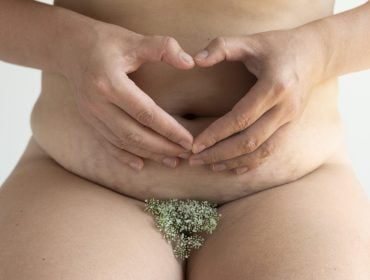Space Invaders! How to Defeat the Crabs STD
There are many STDs that can, at least initially, be so subtle that you may not notice them. They usually start out with very mild symptoms and then progress to the point that they simply cannot be ignored. Then, there are STDs like crabs. These little insects can be impossible to miss.
If you’ve noticed some foreign invaders in your “private territories,” you may have genital lice. These nasty bugs attach themselves to rough body hair and feed on the blood of their hosts, causing intense itching. Due to their similar appearance under a microscope, pubic lice are best known as “crabs.”
Creeped out yet? Fear not! With the right information (and a will to win), you can quickly defeat these pesky groin invaders!
Foreign Attackers
Did you know that crabs are technically a sexually transmitted disease? Crabs are attracted to thicker, more rough hair, like the hair found on the genitals, armpits, eyelashes, and face. While it is possible to get crabs in all of these areas, they are most commonly found on pubic hair and spread through sexual contact, hence the “STD” label.
Once pubic lice have found their home, they will begin to feed on your blood, lay eggs, and quickly multiply. If left untreated, there is a strong chance that they will spread to any sexual partners you have.
How to Spot Pubic Lice
Pubic lice and their eggs are visible to the naked eye. When checking for symptoms of crabs, know that they prefer to hang out around the base of hair follicles, so look there first. Since they are about 2mm in size when fully grown (about half the size of a ladybug), a magnifying glass may be needed to see them. If you feel itchy but do not see any creepy crawlies down there, they may just be well hidden or have moved to another patch of hair, deep within your groin.
Public lice are grayish-brown or copper in appearance, and they get darker if they’ve recently fed on your blood. They blend in with a wide range of skin tones, so if you are experiencing any prolonged itchiness but haven’t seen any, it may be best to treat for them, just to be safe.
Secure and Confidential
STD testing services
The fastest results possbile - available in 1 to 2 days
How Common are Pubic Lice?
Crabs are a very common STD. Around 3 million cases of crabs are reported every year in the United States, and most cases are spread through sexual contact and fomites (infected clothes, bedding, ect). Pubic lice are highly contagious, so having crabs doesn’t necessarily mean you are an unclean or dirty person. But proper hygiene does help reduce the chance of acquiring these little buggers.
Symptoms of Crabs
Another reason why crabs are considered an STD is because they have an incubation period. This means that, like most STDs, it takes a while after contracting the STD for the symptoms to take effect. You will typically not see any symptoms until the incubation period is over. In the case of crabs, it takes around a week to notice symptoms. This is about the amount of time it takes the eggs of the crabs transmitted through sex to hatch. Only a few crabs are normally transmitted through sex, so you likely wouldn’t see them or feel their bites. Once their have hatched, a greater number of crabs will be biting. This is when you would start to notice the symptoms.
 Itching is the most prominent symptom of crabs. Rarely does anything else result from the infection, and they will not transmit any other diseases. Red and blue spots can develop from crab bites, and some people have also cited rashes, broken skin, and even secondary infections from scratching. Also, be advised that some never notice any symptoms, and others may mistake the symptoms for something else.
Itching is the most prominent symptom of crabs. Rarely does anything else result from the infection, and they will not transmit any other diseases. Red and blue spots can develop from crab bites, and some people have also cited rashes, broken skin, and even secondary infections from scratching. Also, be advised that some never notice any symptoms, and others may mistake the symptoms for something else.
Fortunately, crabs are more annoying than dangerous, and they are both easy to treat and do not make you more susceptible to other STDs.
Avoiding Crabs
Pubic lice are very contagious, but fortunately, they can only be transmitted in a few ways. Regular lice (the ones they check for in elementary school) can be found in infected bedding, towels, and dirty clothing. They can even be transferred from person to person through kissing with a lice-infested beard.
Like head lice, pubic lice require a host to feed on or else they quickly die. Because of this, it is difficult for pubic lice to survive on inanimate objects for very long. It is still a possibility, but unlikely. Additionally, their clawed legs are great for holding onto hairs and fibrous materials, but they’re not great for grasping slippery surfaces like toilet seats, making it nearly impossible to acquire crabs in this way.
Outside of abstinence, there is little you can do to protect yourself from crabs. Not even condoms, the ultimate STD avoidance tool, is effective at keeping crabs at bay. Unless they invented a condom for pubic hair. Now there’s an invention!
In the end, you have three options available to reduce the risk of contracting crabs: you can either not have sex entirely, limit partners to those who you know are crab-free (such as monogamous partners), or maintain a diligent grooming regime. And if you think waxing or shaving will protect you from crabs, think again. Removing pubic hair will only work if you remove all other hair with it, and even then it’s considered to be an ineffective way of treating crabs by doctors. The good news is that pubic lice are fairly easy to get rid of, they do not transmit diseases, and they will not make you more susceptible to other STDs.
Debunking the Myths
You can get crabs from a toilet seat:
You cannot get pubic lice from sitting on a toilet seat—or at least it’s incredibly unlikely. Pubic lice are called crabs because of their similar, clawed appearance. These claws are excellent for firmly holding onto hairs but are poor at grasping to slippery surfaces like toilet seats.
You can get pubic lice from animals:
Lice are normally specific to each animal. This means you cannot get any type of lice from your pet. Dog lice can only survive on dog blood, cat lice can only survive on cat blood, and human lice can only survive feasting on human blood.
Crabs are the same as head lice:
Pubic lice are not head lice that simply prefer your underwear over your hat. They are a unique species that are very different from other types of lice.
Shaving off my pubic hair will get rid of crabs:
While shaving pubic hair may be an effective way to get rid of most crabs, they can easily move to other body hair, like your armpit or leg hair.
Pubic lice can jump or fly:
All lice, including crabs, cannot jump or fly. Since they can only crawl, very close contact is necessary to contract crabs.
How to get rid of Crabs
Yes, crabs are annoying and bothersome, but at least they are easy to get rid of without prescription medication. This can be done with over the over-the-counter insecticidal creams, lotions, and shampoos. Treatments that have Permethrin (a mild pesticide), like RID, NIX, and A-200, are strong enough to kill pubic lice while not being too harsh. To ensure complete eradication, follow the steps below:
- Take a shower and wash yourself thoroughly. Be sure to check all body hair, not just pubic hair, to locate all of the lice.
- Follow the instructions of the medication. This normally involves lathering hair in the shampoo or cream and waiting a specific amount of time before removing it.
- Most, if not all, lice should be dead and removed at this point. It is still necessary to go over the infected areas with a fine-toothed comb to ensure all lice and eggs are gone. Shaving is not necessary.
- Crabs only live for about 48 hours. To ensure crabs won’t be able to lay eggs and continue to develop, wash all clothes and bedding in hot water and dry warm. This will kill any remaining lice.
- Repeat the treatment as many times as necessary until no pubic lice or eggs are found.
- Your partner should complete this process at the same time to ensure you are not cycling the infection back and forth.
Protecting Yourself and Others
The Centers for Disease Control and Prevention suggests getting tested for other STDs after successfully treating pubic lice. Though crabs do not make you more susceptible to contracting other STDs, they are typically accompanied with poor hygiene and/or other STDs. An STD test will always provide peace of mind for both you and your partner.
 Some may go long periods of time before noticing they are infected with crabs. This is either because the incubation window is uncharacteristically long for them, or simply because they do not experience symptoms as bad as others. Almost all STDs have a trait of quietly increasing in severity. Crabs may be one of the few STDs that does not get worse with time. Treating crabs and getting tested is also important because it protects those closest to you. To learn more about how to get tested, click here.
Some may go long periods of time before noticing they are infected with crabs. This is either because the incubation window is uncharacteristically long for them, or simply because they do not experience symptoms as bad as others. Almost all STDs have a trait of quietly increasing in severity. Crabs may be one of the few STDs that does not get worse with time. Treating crabs and getting tested is also important because it protects those closest to you. To learn more about how to get tested, click here.
Medically Reviewed by J. Frank Martin JR., MD on February 5, 2024
Secure and Confidential
STD testing services
The fastest results possbile - available in 1 to 2 days

Tagged
Categorized As
Author: Nick Corlis
Nick Corlis is a writer, marketer, and designer. He graduated from Texas State University in San Marcos, Texas, with a degree in Digital Communications. Nick is proud to be able to help eliminate the stigma of STD testing through his writing and is always trying to advocate the importance of your sexual health. Before STDcheck, his favorite way to develop his writing skills was by accepting various writing jobs in college and maintaining multiple blogs. Nick wears many hats here at STDcheck, but specifically enjoys writing accurate, well-researched content that is not only informative and relatable but sometimes also contains memes. When not writing, Nick likes to race cars and go-karts, eat Japanese food, and play games on his computer.




